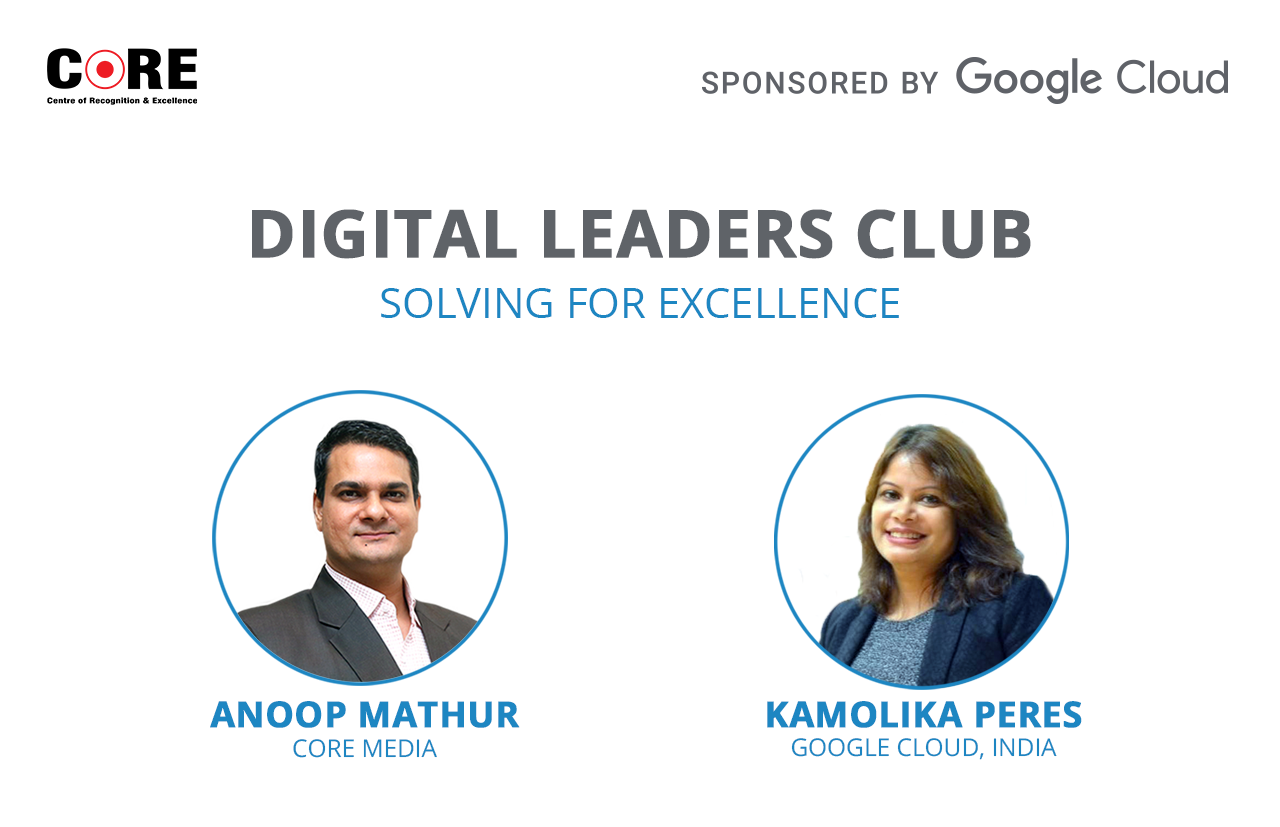The second edition of ‘Digital Leaders Club’—a virtual session curated by CORE Media and powered by Google Cloud—saw technology leaders affirming why cloud is no more a ‘choice’, but a ‘prerequisite’ for enterprises to navigate and thrive in the new world order.
2020 has been a challenging yet rewarding year for technology leaders worldwide. Changing customer behavior, shifting work models and the increased need to embrace digital have led CIOs across sectors to revamp their technology roadmaps and modernize their technology stacks in unprecedented ways.
While cloud has been a key part of the enterprise technology agenda for quite some time now, future-ready enterprises turned to cloud with renewed interest in the last one year. Cloud is at the center of almost all the transformation and modernization efforts that organizations have embarked on today.
The second edition of ‘Digital Leaders Club’—a virtual session curated by CORE Media and powered by Google Cloud—saw technology leaders from different industries affirming why cloud is no more a ‘choice’, but a ‘prerequisite’ for enterprises to navigate and thrive in the new world order.
The exclusive session moderated by Anoop Mathur, Founder & President, CORE Media, highlighted how different organizations are leveraging cloud in enabling new digital channels, ensuring business continuity, controlling costs and staying agile.
“Cloud is helping enterprises redefine the way they work and do business. Every single technology leader that we speak to reiterate the fact that cloud has made them more resilient, agile and most importantly, adaptable to changes. Cloud adoption will most likely see faster pace and matured use cases in the days to come,” said Mathur, while setting the context for the discussion.
Cloud powering long-term technology agendas
A senior technology leader from the broadcast industry illustrated how his organization is relooking at traditional models of video creation and delivery and adopting new norms. His firm has been able to successfully meet the spike in demand during the pandemic and enable new remote working and collaboration models which were unheard of in the broadcast sector. He believes that, going forward, cloud models will completely modernize the video value chain.
“Customer experience and the whole content delivery network aspect is critical for the future of media and entertainment industry. In view of this, Google is actually opening up our Edge Cache notes, which YouTube uses internally, to other media companies. We are seeing a lot of traction in that area,” said Rajesh Shewani, Customer Engineering Manager at Google Cloud.
The financial services sector is another space which has seen significant technology disruption in the last 12 months. From enabling new digital models to building contactless customer experience to reaching out to customers in remote areas, financial services institutions are at the forefront of leveraging cloud models.
“Till last year, cloud was probably perceived as a ‘choice’ by some firms in our sector. But circumstances forced all of us to go to cloud in the last one year. While we did see some teething troubles in the initial phase, it’s very well established by now that cloud is the way to go. Because, some of the changes that the global disruption introduced are permanent and there is no going back to the old normal,” said a senior technology leader from the sector.
Data-driven enterprises
Future-ready enterprises have clearly identified the power that ‘data’ holds and are leaving no stone unturned in harnessing data to achieve better customer experience, improve revenue and find new opportunities.
Technology leaders are actively investing on data analytics, AI, ML and data lakes in their endeavor to enable data-driven models. In the BFSI sector, for example, cloud & analytics technologies enable credit risk models from social and search data. In the new era of ‘data, enterprises are interpreting data in unforeseen ways to arrive at valuable insights and innovative products/offerings.
Even in the hospitality sector, one of the hardest hit industries worldwide, is looking at leveraging cloud. “During last year, out focus has been on delivering a touchless experience to customers while keeping cost under control. We were quick enough to diversify and find new revenue models to keep business going during the pandemic. Cloud will also be a key part of our revival strategy when the demand return to normal,” says a leading CIO from the sector.
“Cloud has enabled some permanent changes in the way enterprises manage customers, run supply chains, procure materials and leverage data. It’s always interesting to hear from technology leaders as to how they see the state of technology is shaping up and what the next phase of cloud adoption looks like,” sums up Kamolika Peres, Director, Google Cloud India.
Resources:


